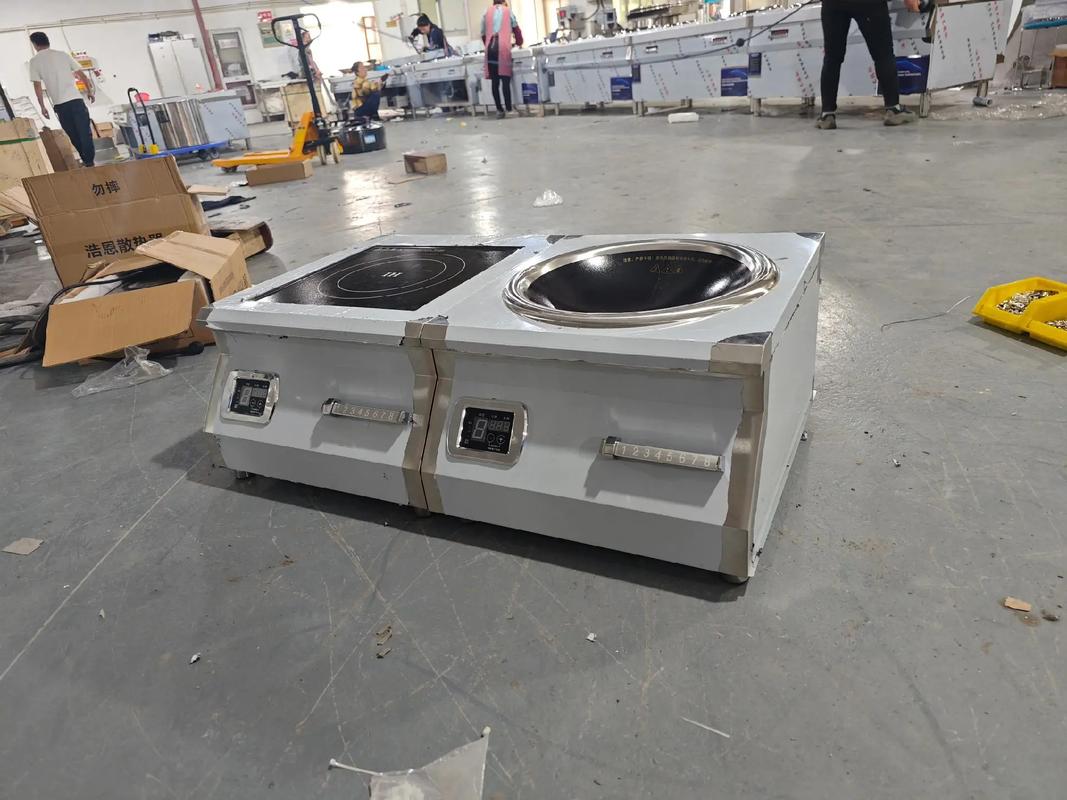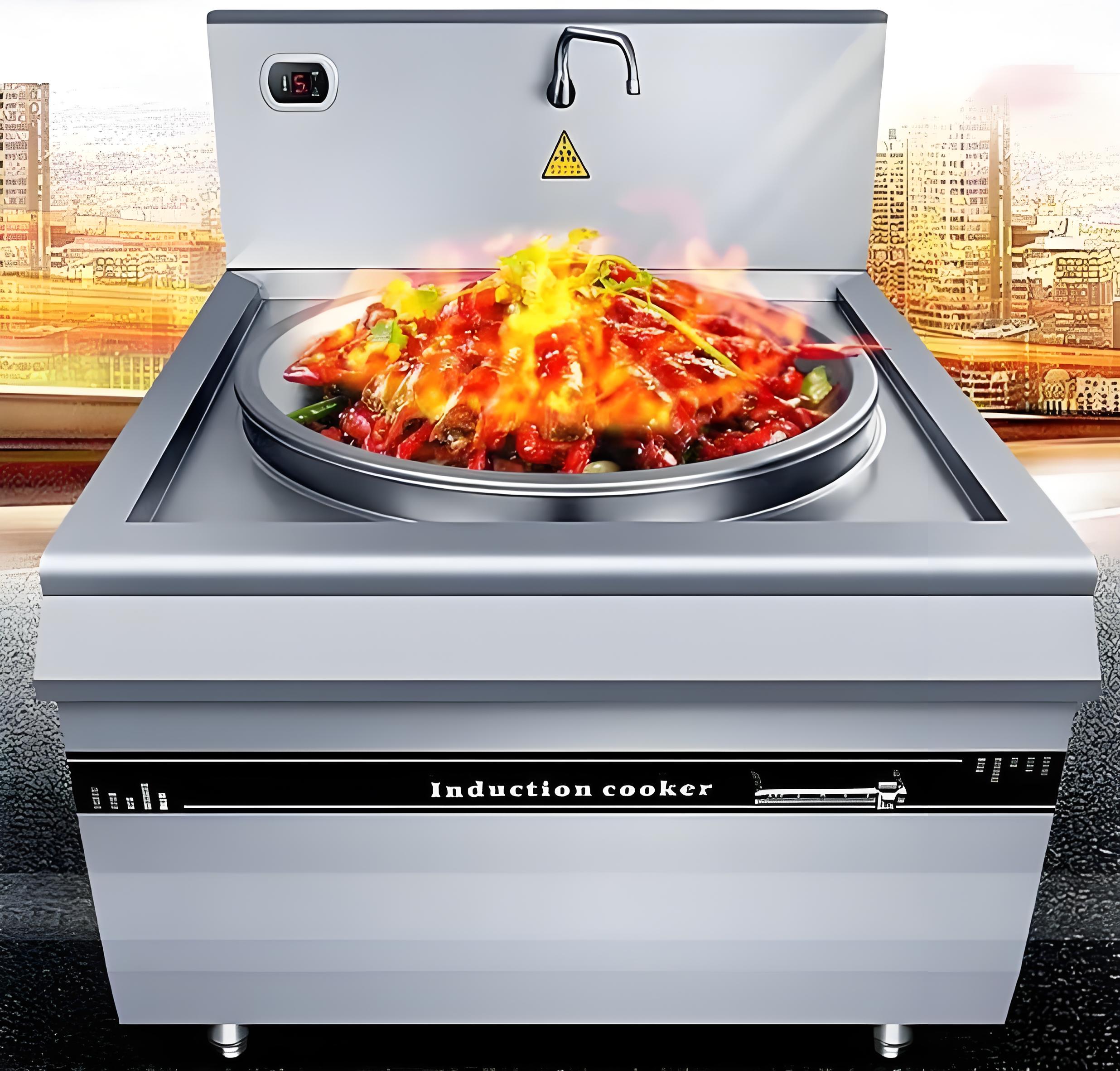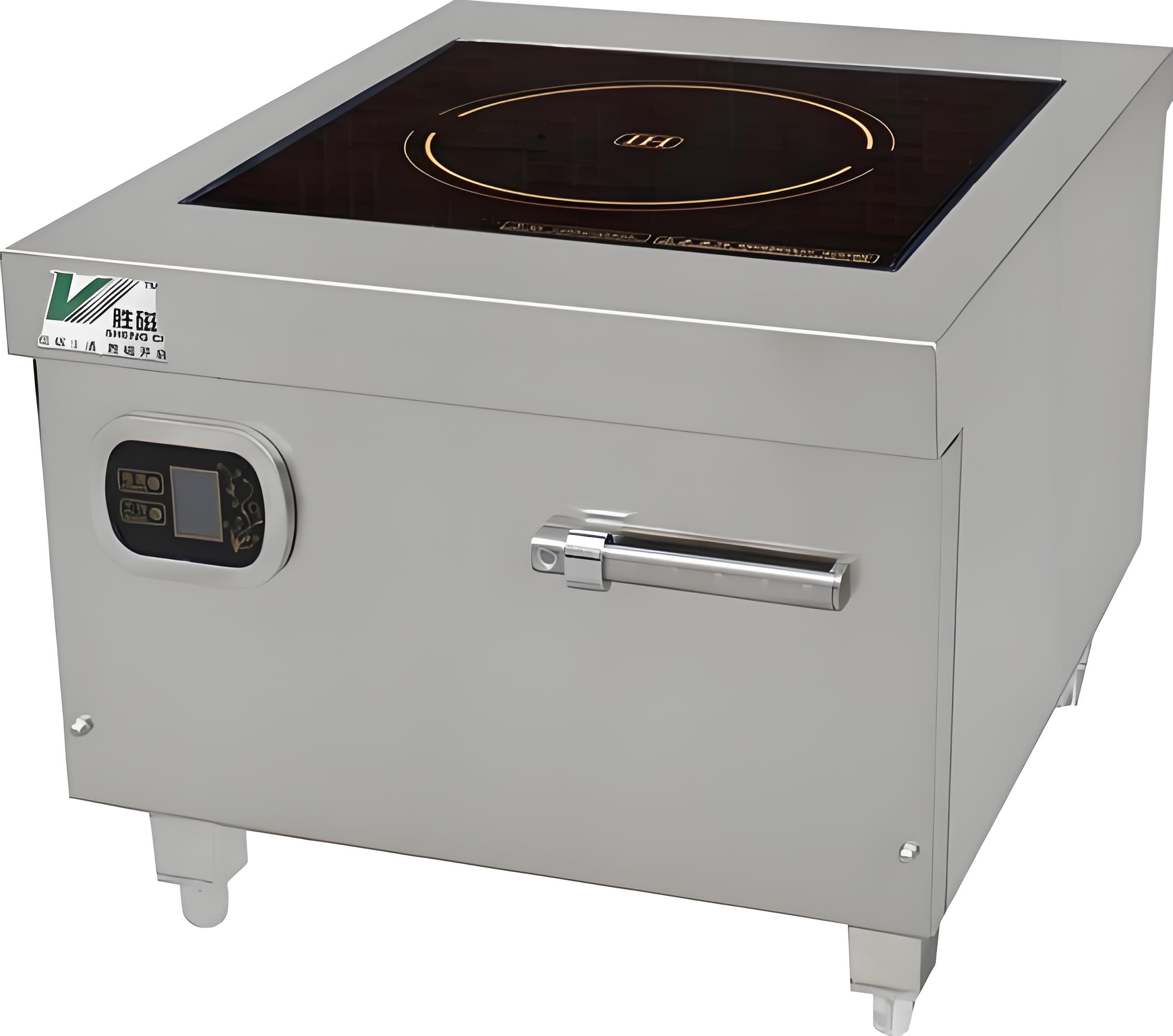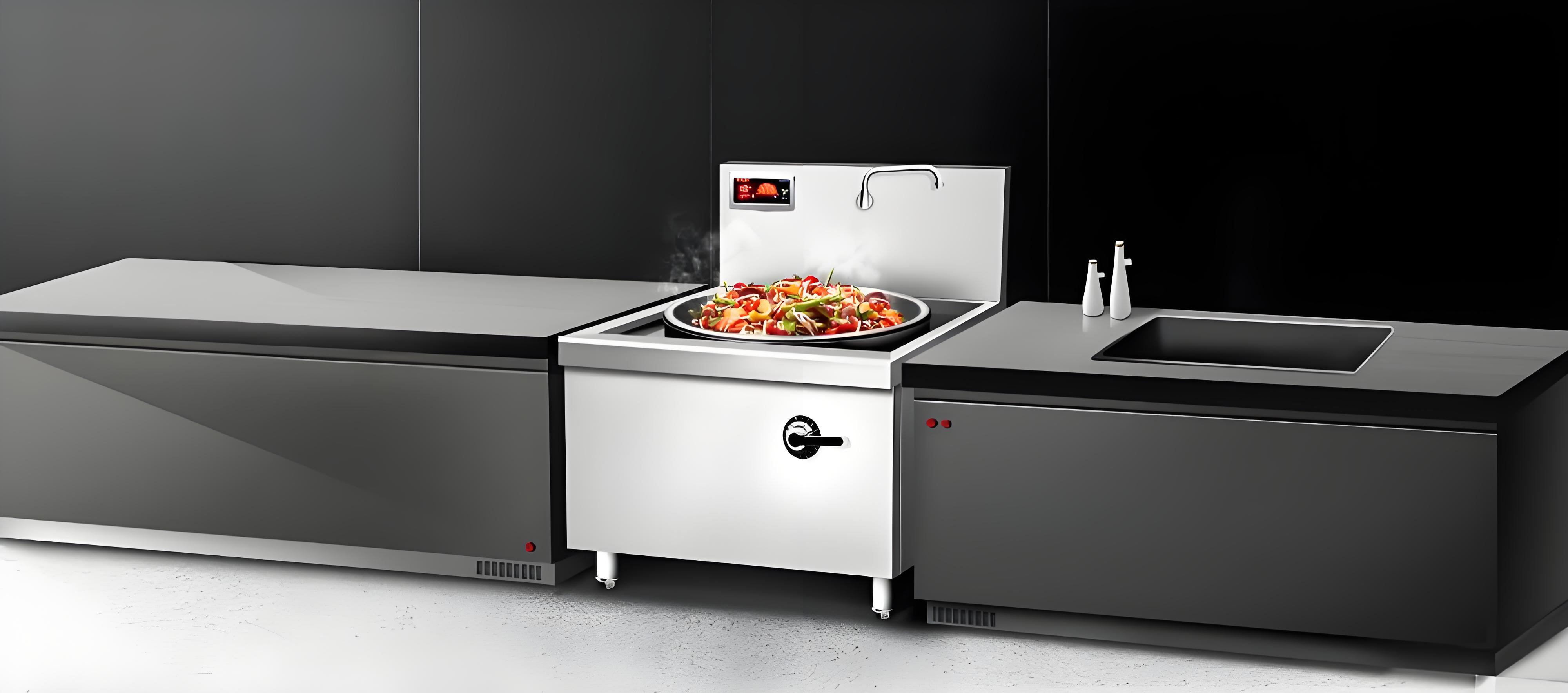Last month, a long-time restaurant client of mine called in a panic.His 20KW induction wok cooker — the backbone of his kitchen — had suddenly gone dark right before the lunch rush. In desperation, he called a local electrician who claimed, “Ah, it’s all the same as a regular stove, I’ll just open it up.”
Two hours later, not only was the cooker still dead, but they’d also managed to short the main control board, blowing out an expensive IGBT module. What should have been a minor thermal sensor replacement turned into a full-scale board swap costing three times more — plus two days of lost business.

Unfortunately, stories like this are all too common.
I’ve been in the commercial induction industry for well over a decade, working alongside manufacturers, service teams, and countless restaurant owners. If there’s one piece of advice I wish more people took seriously, it’s this:
When a high-power induction cooker breaks down, always — always — bring in a professional who specializes in these systems.
It’s not marketing hype. It’s about protecting your equipment, your staff, and your wallet. Let me explain why.
What Makes High-Power Induction Cookers So Different?
People often assume induction is induction — whether it’s a tiny domestic 2KW hob or a roaring 30KW stock pot cooker. After all, they all heat pans with magnetic fields, right?
Not quite. Commercial high-power induction cookers are in a completely different league. Here’s why:
Much higher currents & voltages: A 30KW induction cooker may draw over 40 amps at 380V three-phase. Mistakes here can be catastrophic.
Complex power electronics: These machines use sophisticated IGBT modules, rectifiers, and multi-stage controllers that actively balance loads, adjust frequencies, and protect themselves from spikes.
Multiple interlocks & sensors: Commercial cookers monitor dozens of parameters simultaneously — temperature, current, voltage, fan speed, and even door open/close sensors.
Trying to repair one without understanding this ecosystem is like tinkering with a car’s ECU using a kitchen knife and duct tape.
Typical Failures Are Rarely Simple
Let me show you some common failures I encounter — and why they’re not the kind of thing a general electrician (or enthusiastic DIYer) should handle.
| Common Issue | What’s Actually Going On | Why It’s Not Simple |
|---|---|---|
| Overheat shutdown | Sensors trigger to save IGBT | Needs calibrated thermal probes, may involve firmware recheck |
| Sudden power loss | Fault in power module | Could be capacitor, driver IC, or power board layers — not just a fuse |
| Weird buzzing or humming | Coil frequency mismatch | Requires oscilloscope analysis to tune or replace driver stages |
| Trips main breaker repeatedly | Possible grounding / short | Needs insulation resistance tests, megohm checks under load |

The Real Risks of Non-Professional Repairs
I understand why people sometimes think, “Why not just get my regular electrician to look at it? It’s cheaper, and surely electricity is electricity.”
Here’s a reality check from many unfortunate cases I’ve been called in to salvage later:
| DIY / Unqualified Repairs | Typical Consequence |
|---|---|
| Bypass or short out sensors | Permanent IGBT or coil damage, major fire hazard |
| Wrong type of capacitor installed | Rapid secondary failures, unstable frequency control |
| No reprogramming of controller chip | Cooker might work, but protection systems disabled — latent risk |
| Poor solder joints or wrong gauge wire | Localized overheating, future breakdowns, insurance issues on audits |
You might switch the cooker back on, it heats, everyone celebrates. Meanwhile, it’s running outside safe voltage margins, or protection interrupts are silently disabled. A month later, it fails spectacularly — and warranty support is void because it was tampered with.
Why True Professionals Handle These Jobs Differently
A specialist who works on high-power induction cookers brings more than a screwdriver. Typically, they’ll:
Run insulation resistance tests on the coil and all high-voltage lines, often at 1000V, to catch micro-leaks.
Use an oscilloscope to check inverter output waveform and confirm it matches manufacturer specs.
Test IGBT gate drive signals to ensure balanced firing, avoiding premature module death.
Verify thermal cut-off calibration, sometimes with a precision heat gun or dummy loads.
Reload or validate firmware, ensuring protections like soft-start and anti-surge remain intact.
In short, they approach it systematically — with data and documentation, not guesses.

The Hidden Cost Argument: Why Going Cheap Often Becomes Expensive
I’ve seen owners spend $50 on a local handyman “fix” — only to pay $800 weeks later when it fails catastrophically. Worse, the second failure often damages more expensive modules that would have survived with a proper first repair.
A few years ago, I built this rough calculator for a large catering client. We tracked 15 repairs over two years across different shops — some done by random electricians, some by certified techs.
| Approach | Avg. Immediate Cost | Total 1-Year Cost (incl. repeat issues) |
|---|---|---|
| General electrician / DIY | $70 – $150 | $500 – $1200 |
| Certified induction specialist | $200 – $350 | $200 – $400 |
It’s Not Just About Money — It’s Also About Safety
Remember, you’re often dealing with high-frequency AC currents running through powerful electromagnetic coils. Improper repairs can:
Leave grounding paths incomplete, risking electric shock to staff.
Cause localized heating inside the chassis, a major fire hazard.
Create unbalanced three-phase loads, which not only damage the cooker but can harm other equipment on the same line.
I once inspected a failed unit in a hotel where a previous “repairman” used regular PVC electrical wire inside a high-temperature zone. The insulation melted, shorted against the chassis, and started smoldering. The hotel narrowly avoided a full-scale kitchen fire.
How to Choose the Right Professional
Not every “induction repair service” is equal. Here’s what I recommend checking before you let someone open up your cooker:
Ask if they specialize in commercial induction.
Not just “kitchen appliances” generally — specifically commercial induction above 8KW.
Check for diagnostic tools.
Anyone working on these should have an insulation tester (megohm meter), clamp meter, and ideally a scope.
Ask about software.
Many modern cookers require microcontroller resets or parameter checks after major parts are replaced. Can they handle that?
Get a written service note.
If someone repairs it, you should receive a checklist of what was inspected and replaced. This is crucial for insurance and future warranty claims.

A Few Words on Manufacturer Support
If your unit is still under warranty, absolutely call the manufacturer’s authorized service team first. Even if it’s slightly more expensive, it keeps your warranty intact.
Some manufacturers even require authorized service center logs to keep coverage valid. If your local general electrician opens it up, you may permanently void coverage on the whole machine — I’ve seen big disputes end with owners eating full replacement costs.
Wrapping It Up: Don’t Gamble With Your Kitchen’s Heart
If there’s one thing I’ve learned after seeing hundreds of these scenarios up close, it’s that high-power induction equipment demands respect. These aren’t simple coil stoves — they’re carefully tuned systems where power electronics, software, and mechanical design all interlock.
By trusting your repairs to specialists, you:
Protect your staff and customers from serious electrical risks.
Keep your business running smoothly, without surprise shutdowns or fried circuits.
Actually spend less over the cooker’s lifetime.
I’m always happy to chat if you want a second opinion on a repair quote or suspect someone’s offering a “too good to be true” fix. In the long run, it’s usually cheaper — and much safer — to do it right the first time.

Related Q&A
Q: What’s the most common amateur repair mistake?
A: Probably bypassing sensors that shut down the cooker on overheat. It might seem like it “fixes” the problem, but it disables the most critical safety layer.
Q: Is it ever okay to have a local electrician fix minor issues?
A: Sure, if it’s truly minor — like replacing external power cables or plug heads. But anything inside the chassis? Always go to a specialist.
Q: How do I know if a technician is truly qualified?
A: Ask them to show a recent commercial induction job they completed. A reputable tech usually has photos, reports, or at least part invoices showing they handle these systems regularly.
Q: Are branded spare parts really necessary?
A: Yes. Generic IGBTs, for example, often have lower tolerances. In a high-frequency environment, that’s a gamble. Always insist on matching or OEM-specified components.





